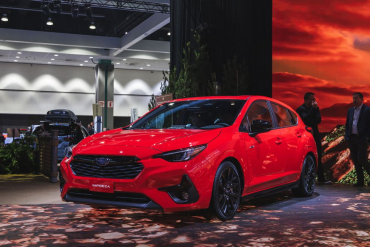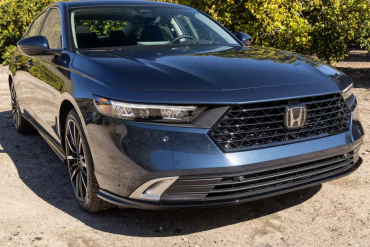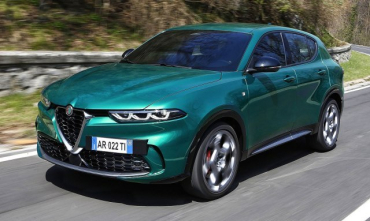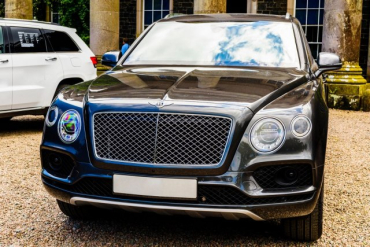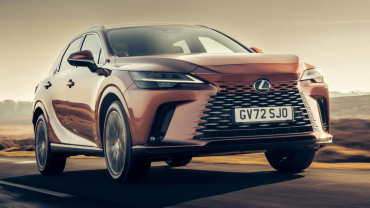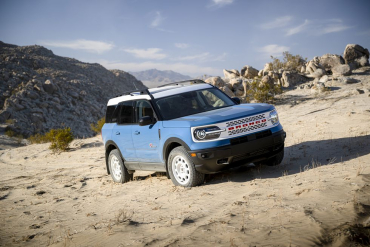
Worldcarblog.com
2024 Subaru Impreza - First review
Subaru is rolling out the sixth-generation Impreza for the 2024 model year, and with it comes new looks, new technology, and a new powertrain option. The new Subie made its debut at the 2022 Los Angeles Auto Show just as it did when it showed face for the first time in 1992. Like the '90s original, the 2024 Impreza will be once again offered in sporty RS guise, powered by a 182-hp 2.5-liter four-cylinder borrowed from the Crosstrek SUV. Lower-priced and lower-powered base and Sport models get a 152-hp 2.0-liter instead. Subaru says the 2024 Impreza's chassis is stiffer than before and the compact hatchback's all-wheel-drive system now features active torque vectoring. We won't know if any of that adds more spark to the Impreza's personality until we get our hands on one, but for now, we'll say things look promising.
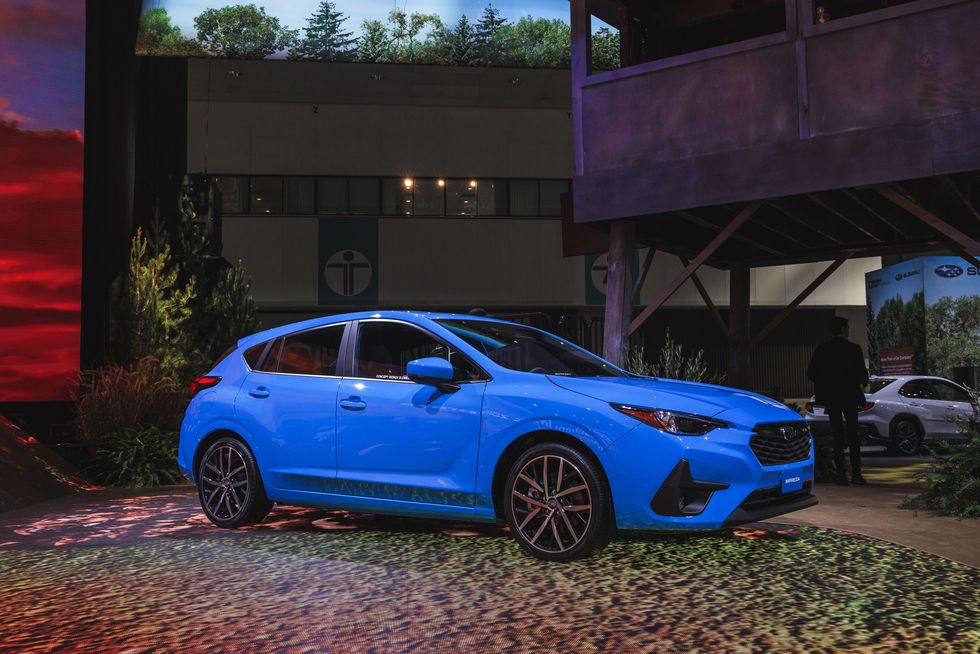
What's New for 2024?
So far, we know about several key changes to the Impreza model line. For starters, Subaru has made the continuously variable automatic (CVT) standard on all 2024 Imprezas. Unfortunately for three-pedal advocates, the automaker hasn't mentioned the availability of a manual transmission. Additionally, the Impreza is slated to be offered exclusively in a five-door hatchback body configuration–something WRX fanatics will surely envy, as they've been hoping for a WRX hatchback since it was discontinued after the 2014 model year. Speaking of the WRX, updates to the Impreza's exterior are similar to the design language seen on the latest generation of both the WRX and Crosstrek. Unlike those two models, though, the next-gen Impreza rolls without any plastic cladding clinging desperately to its body. Changes to the interior design make it almost identical to that of its newer stablemates, particularly the Crosstrek. The 11.6-inch Starlink touch display is available in the Impreza for the first time and is standard on Sport and RS trim levels.
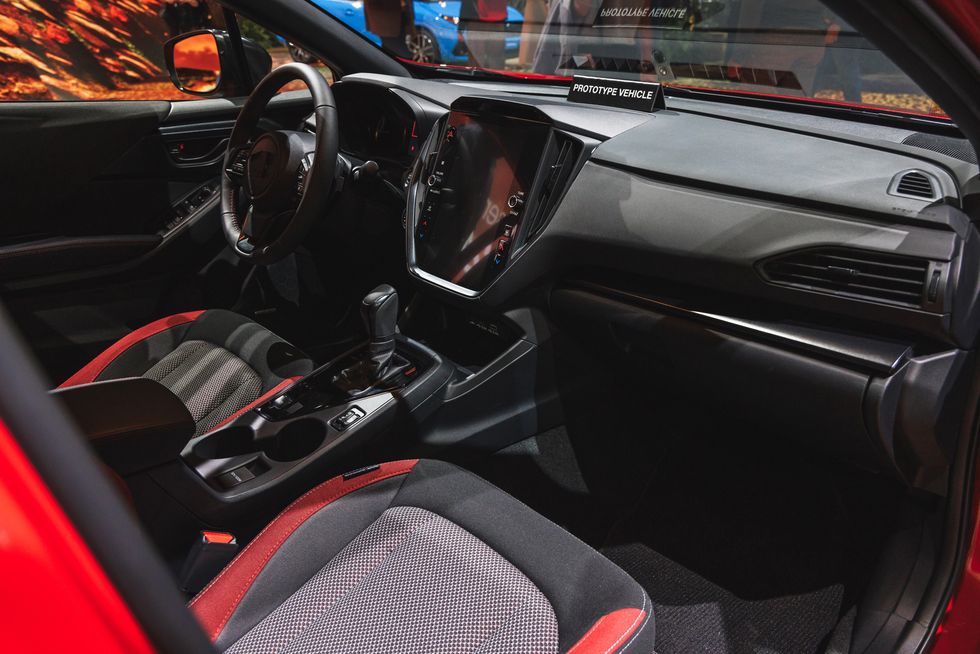
Given our natural disposition towards sports-oriented vehicles, plus the power of nostalgia, we're most interested in the reborn Impreza RS, which comes with a more powerful 2.5-liter four-cylinder engine, unique 18-inch wheels, artificial carbon fiber interior trim, a leather-wrapped steering wheel, aluminum-finished pedals, heated front seats, a 10-way power driver's seat with lumbar support, and USB charge ports for rear passengers.
Engine, Transmission, and Performance
The Impreza retains its meager naturally aspirated 2.0-liter flat-four engine, which musters the same 152 horsepower and 145 pound-feet of torque as before. A larger 2.5-liter four-cylinder boxer engine will be exclusively available for the new RS model, providing a power bump of 30 horsepower and 33 pound-feet of torque for a total output of 182 horses and 178 pound-feet. A CVT is standard on all 2024 Imprezas as is Active Torque Vectoring, which improves upon the capable Subaru Symmetrical All-Wheel Drive system. For an extra sprinkling of its rally racing sportiness, Subaru has equipped the new Impreza with a version of the dual-pinion electronic power steering rack found in the WRX. The automaker says that it has increased the chassis stiffness of the next-gen Impreza by 10 percent, too, which in theory should help both handling and ride. We'll update this section with performance figures once we've driven and tested the all-new Impreza.
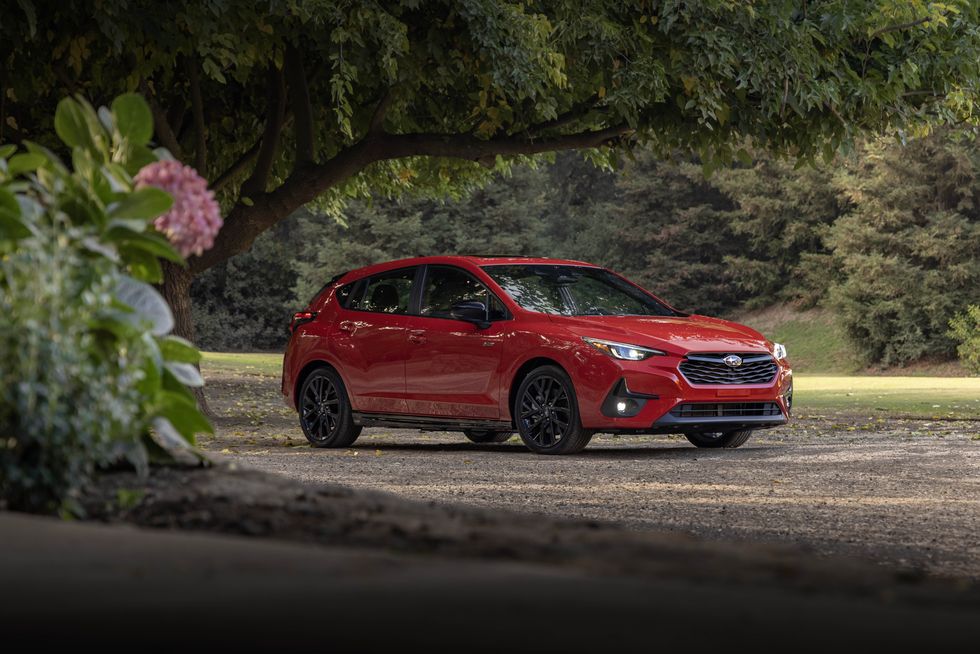
Fuel Economy and Real-World MPG
Since the base Impreza and Impreza Sport models will both make use of the same 2.0-liter engine in the outgoing model, we think it's safe to assume that EPA ratings will be similar to those of the current five-door hatchback equipped with the CVT: 28 miles per gallon in the city and 36 on the highway. We'll update this section once the EPA has published its ratings and after we've run the Impreza through our 75-mph highway fuel economy route which is part of our extensive testing regimen.
Interior, Comfort, and Cargo
Subaru interiors are known for being pragmatic rather than posh, and that trend continues with the 2024 Impreza. Dual-zone climate controls are standard for the entire model line as are 60/40 folding rear seats. The automaker says it focused its efforts on an ergonomic front seat design and also hushing the cabin–we'll verify whether it's more comfortable and quieter than the fifth-gen model once we've had the chance to get behind the wheel. From what we can tell so far, the updates appear to be similar to the changes found inside the 2022 WRX, including a larger center stack display. The revisions in the WRX sports sedan felt and looked like a natural progression from the interior design of the preceding generation, and we expect the same from the new hatchback since their interior designs are nearly identical.
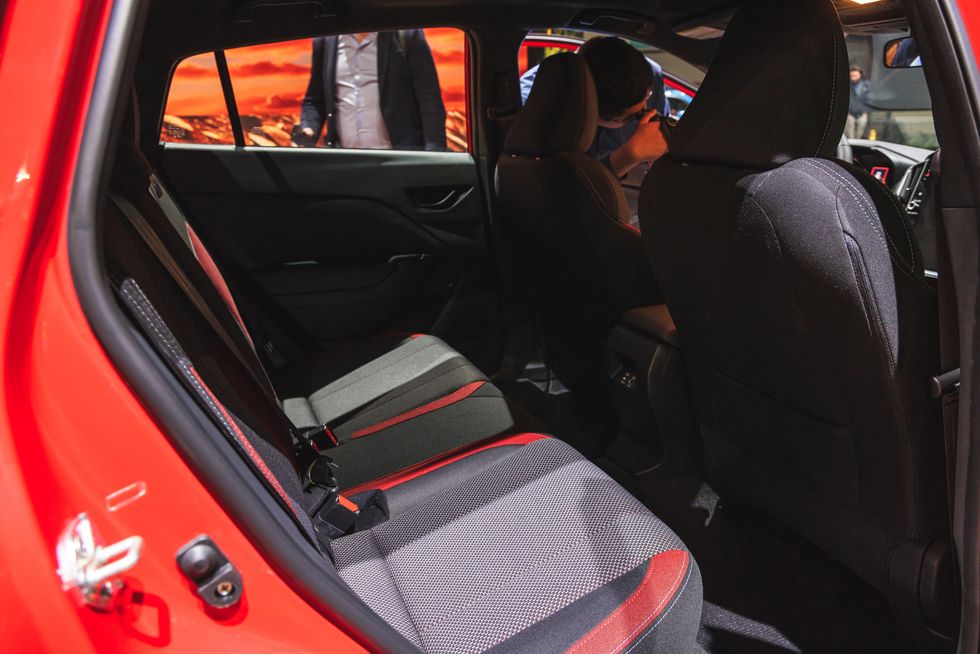
Infotainment and Connectivity
The 2024 Subaru Impreza offers the automaker's Starlink multimedia system standard on Sport and RS models. It is compatible with wireless Apple CarPlay and Android Auto and features an 11.6-inch touchscreen display with controls for the sound system, HVAC, and certain vehicle functions. For models equipped with Starlink, Subaru also offers its Safety and Security Connect Services, such as SOS Emergency Assistance and Stolen Vehicle Recovery Service, as well as conveniences like Remote Vehicle Locator. On top of that, the new Impreza provides its passengers with an auxiliary input jack, a USB-C port, and a USB-A port, so you're set regardless of which smartphone you happen to have. There's also an available Harmon Kardon 10-speaker sound system, though it's only offered on the range-topping RS model.
Safety and Driver-Assistance Features
In addition to the aforementioned Safety and Security Connected Services available for models equipped with Starlink, Subaru has made its EyeSight Driver Assist Technology standard for all three Impreza trim levels. Automatic emergency steering is included on models fitted with the optional blind-spot detection system, which is already packaged with lane-keep assist and rear cross-traffic alert—all of which are standard on the new RS model. Subaru is also introducing a few new services to the 2024 Impreza, including Valet Mode, Trip Log and Driving Journal, and Remote Vehicle Configuration. Neither the National Highway Traffic Safety Administration (NHTSA) nor the Insurance Institute for Highway Safety (IIHS) websites have crash-test results for the next-generation Impreza yet. Key safety features include:
Standard adaptive cruise control and lane-keep assist
Available blind-spot monitoring and rear cross-traffic alert
Available automatic emergency steering
Warranty and Maintenance Coverage
The Impreza's warranty is average for the class and not as generous as that of the Hyundai Elantra or the Kia Forte, both of which offer powertrain coverage for up to 10 years or 100,000 miles.
Limited warranty covers three years or 36,000 miles
Powertrain warranty covers five years or 60,000 miles
No complimentary scheduled maintenance
The most popular Volkswagen models have risen in price again
The German brand has informed dealers in Germany that conventionally powered cars will rise in price by 4.4 percent, citing inflation as the reason.
In a letter to dealers, Volkswagen announced that "significant price increases in the field of raw materials, energy sources and equipment" are actually the reason for this price increase. This price increase applies exclusively to models with an internal combustion engine, such as the Golf, Tiguan, Passat wagon, Polo and T-Roc.
All gasoline and diesel Volkswagens will have new prices from February 23. "Even Volkswagen cannot avoid high inflation." "While we are doing our best with long-term contracts, tactical investments and efficiency gains, the impact on price cannot be fully compensated," Volkswagen said in a letter.
Dealers, already worried about poor sales, criticized this decision by the Wolfsburg-based company. "I am shocked. Our sales are falling, and they are raising prices," said a Volkswagen salesperson who wished to remain anonymous.
Many dealers feel that prices should actually be lowered, due to the uncertainty of buyers in this economic environment. However, Volkswagen is not the only one raising prices, as the average price of a new car in Germany increased by as much as 5,000 euros last year.
2023 Honda Accord Review: Among the Best of What’s Left
The verdict: The redesigned 2023 Honda Accord is better than its predecessor, though not by leaps and bounds, and remains one of the best choices in the dwindling mid-size sedan class.
Versus the competition: As more and more mid-size sedans are discontinued, the Accord soldiers on and solidifies its position as one of the best in its class, though it cedes aggressiveness and performance to (of all things) the Toyota Camry.
As we stopped to shoot photos and video of the new Honda Accord, what appeared to be a vulture circled overhead — an encapsulation of the state of the mid-size sedan class that’s perhaps a bit too on the nose. Notable models like the Volkswagen Passat and Mazda6 are discontinued, and the status of others seems tenuous at best as shoppers continue to display their preference for SUVs. But Honda doesn’t think the sedan is dead quite yet, and the new 11th-generation Accord is evidence of that.
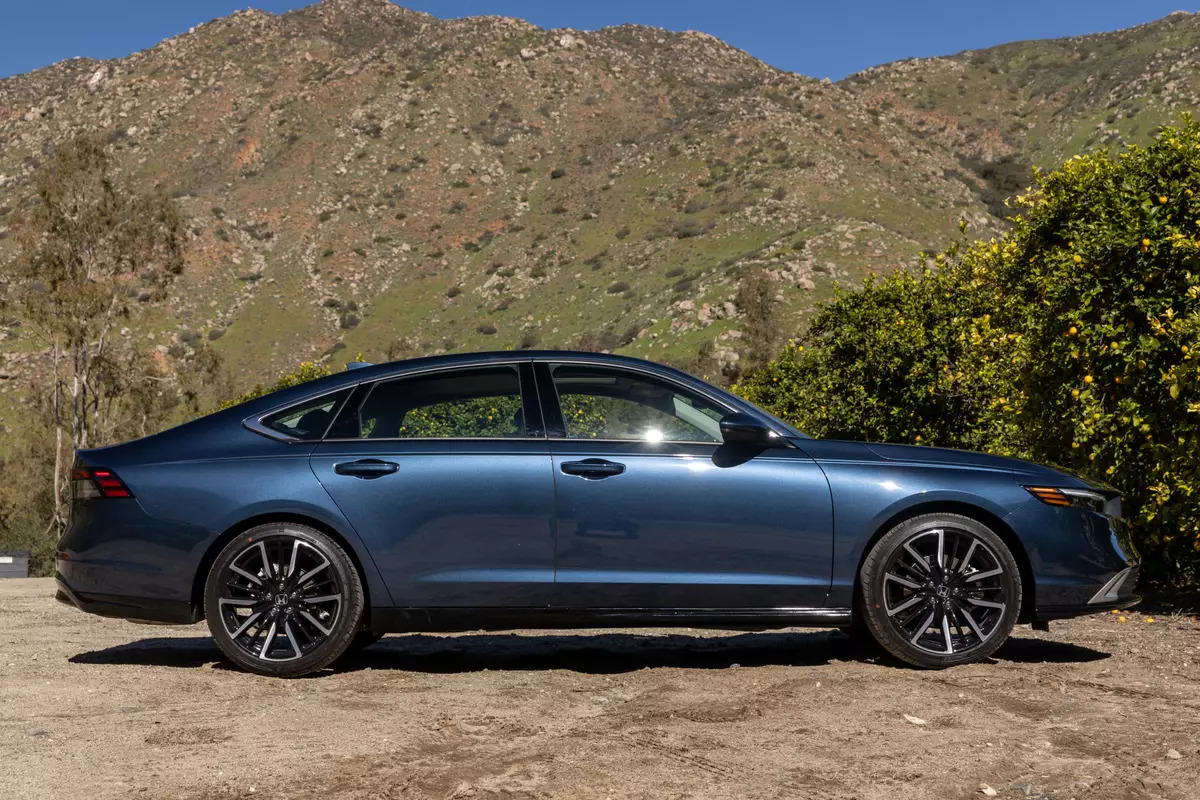
As part of its update, the Accord gets new styling that brings its looks in line with other Hondas. To my eyes, it looks like a big Civic, and I mean that as a compliment because I think the current Civic is one of the handsomest mainstream vehicles currently on sale. The automaker also eliminated the optional turbocharged 2.0-liter four-cylinder gas engine; buyers have a choice of a new hybrid powertrain using a 2.0-liter four-cylinder and two electric motors or an updated (but mostly carryover) turbo 1.5-liter four-cylinder engine and continuously variable automatic transmission. As with the redesigned 2023 CR-V compact SUV, however, the majority of 2023 Accords — and all Sport models — will come exclusively with the hybrid powertrain. All Accords also remain front-wheel drive even as all-wheel drive proliferates among competitors.
I traveled to Southern California for our first chance to drive the 2023 Accord and got to experience both the Sport and Touring hybrids as well as the gas-only EX (per Cars.com’s ethics policy, we pay for travel and lodging when attending such manufacturer-sponsored events). The good news for shoppers looking for a sedan is that the new Accord is better than its predecessor and one of the best choices in its class. The good news for buyers of the previous-gen Accord is that you shouldn’t feel buyer’s remorse — the improvements are mostly incremental.
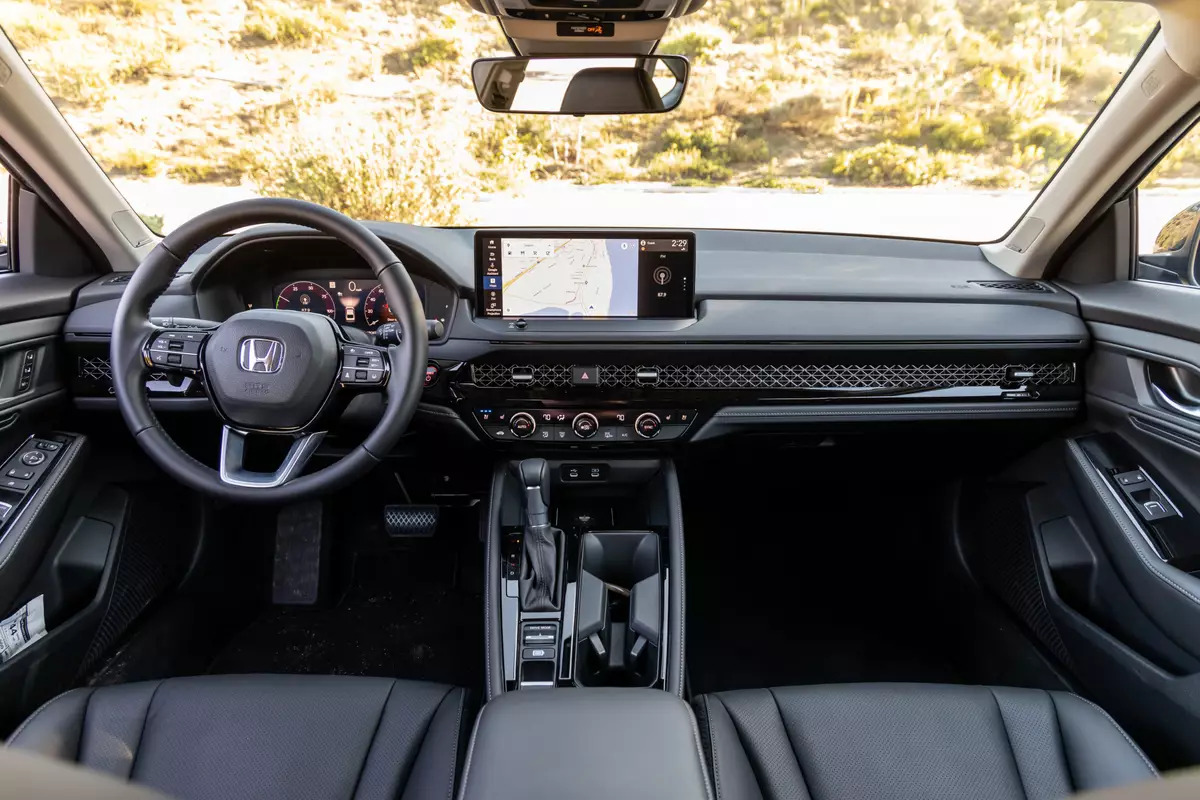
Easy and Mostly Pleasant to Drive
While “easy to drive” usually is faint praise — like a “very drinkable” beer — here it’s a compliment. Mid-size sedans should be comfortable, and the new Accord continues to excel in that regard. Hybrid versions have a system total of 204 horsepower and 247 pounds-feet of torque, and even though that includes models with the Sport designation, sportiness is not the Accord’s strong suit. The hybrid remains composed through corners with minimal but noticeable body roll, as well as little understeer despite its FWD configuration. According to Honda, the rear track is 0.4 inch wider, suspension tuning has been updated and the car is stiffer than the previous generation; none of that translates into significant handling improvements, but it is better. I do feel like some of my enjoyment of the Accord’s handling can be attributed to the simple fact that it’s a sedan in a market increasingly awash in SUVs; I love the feeling of sitting lower, and the car’s lower center of gravity compared with an SUV.
The Accord rides a bit firmly with the 19-inch wheels and low-profile tires that go on the Sport and Touring models I drove, but not so much that I found it truly objectionable. Steering, as in the previous generation, remains communicative and doesn’t feel overboosted; switching the drive mode into Sport adds extra artificial heft. Notably, the Sport and Touring trim levels had no noticeable difference in performance or dynamics. Accelerator pedal response is disappointing in hybrid mode, but power comes on more linearly when the powertrain is only using electric power. Like most hybrids, the gas engine is quick to join the party under brisk acceleration; I observed the best power delivery when cruising at highway speeds with the gas engine off before stepping on the accelerator to pass.
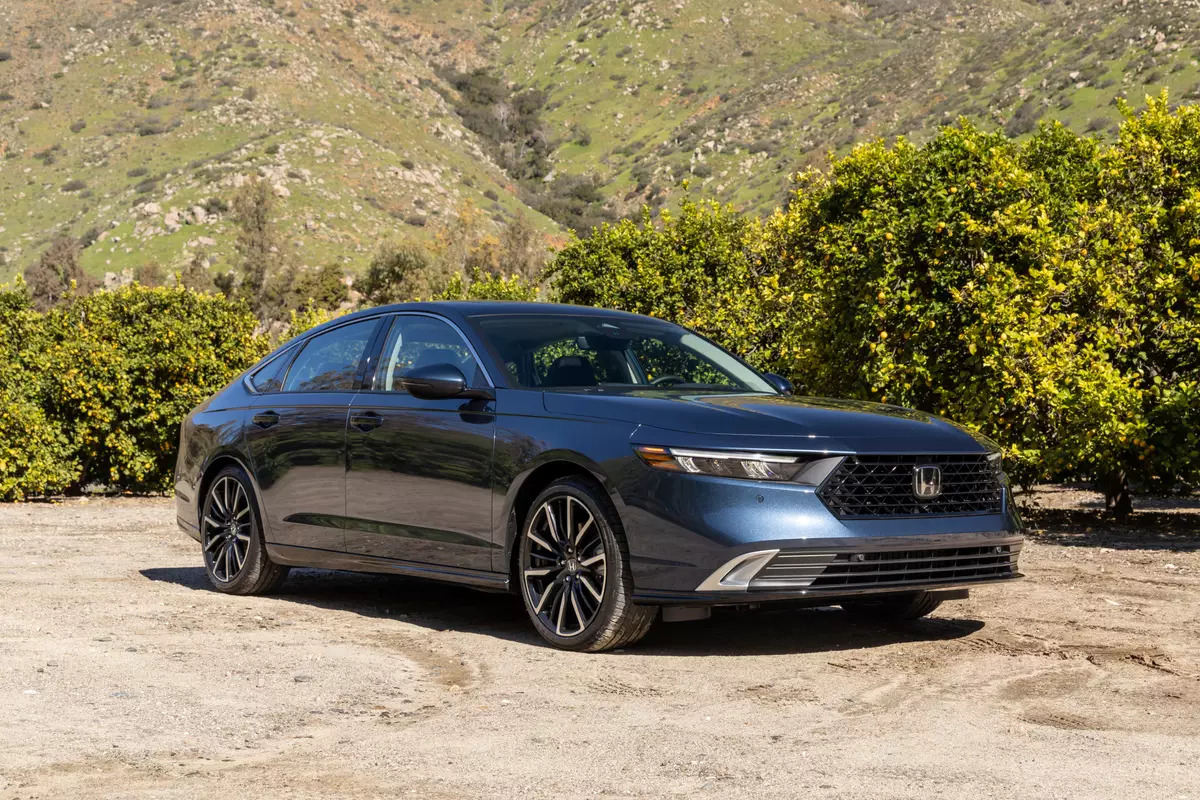
Instead of shifting, the paddles mounted on the steering wheel adjust the Accord Hybrid’s regenerative-braking strength. At their strongest level, the regen brakes allow for near-one-pedal driving. The brakes are a bit grabby initially, but they’re fairly easy to modulate otherwise. The regenerative brakes are also useful for controlling downhill speeds. At the lowest setting, which requires full use of the brake pedal, braking feel is linear and confident without any of the mushy or vague feel that often plagues hybrids.
The gas-only EX trim I drove had a better-cushioned ride — it gets 17-inch wheels and taller-sidewall tires — but it also felt less composed than either the Sport or Touring. Bumps and road imperfections that the Sport and Touring went over with just a firm impact upset the EX. Steering also felt vaguer, perhaps because of the different wheel-and-tire combination. Its 192-hp, turbocharged 1.5-liter four-cylinder engine is more refined, according to Honda, but any refinements compared to the previous generation flew under my radar. The powertrain is still noisy under hard acceleration and feels slower but more responsive than the hybrid.
Fuel economy becomes more important when a car commits to hybridization as much as the Accord does, and the good news is that new hybrid variants are more fuel-efficient than the old versions: Sport and Touring models are EPA-rated 44 mpg combined, up from the 10th gen’s 43 mpg; the Accord Hybrid is now rated as high as 48 mpg combined, also an increase of 1 mpg. The 2023 Toyota Camry Hybrid LE is rated far higher than the Accord Hybrid at 52 mpg combined, but other Camry Hybrids (rated at 46 mpg combined) sit in the middle of the Accord’s ratings. Gas-only Accords are rated 32 mpg combined, 1 mpg less than the last generation.
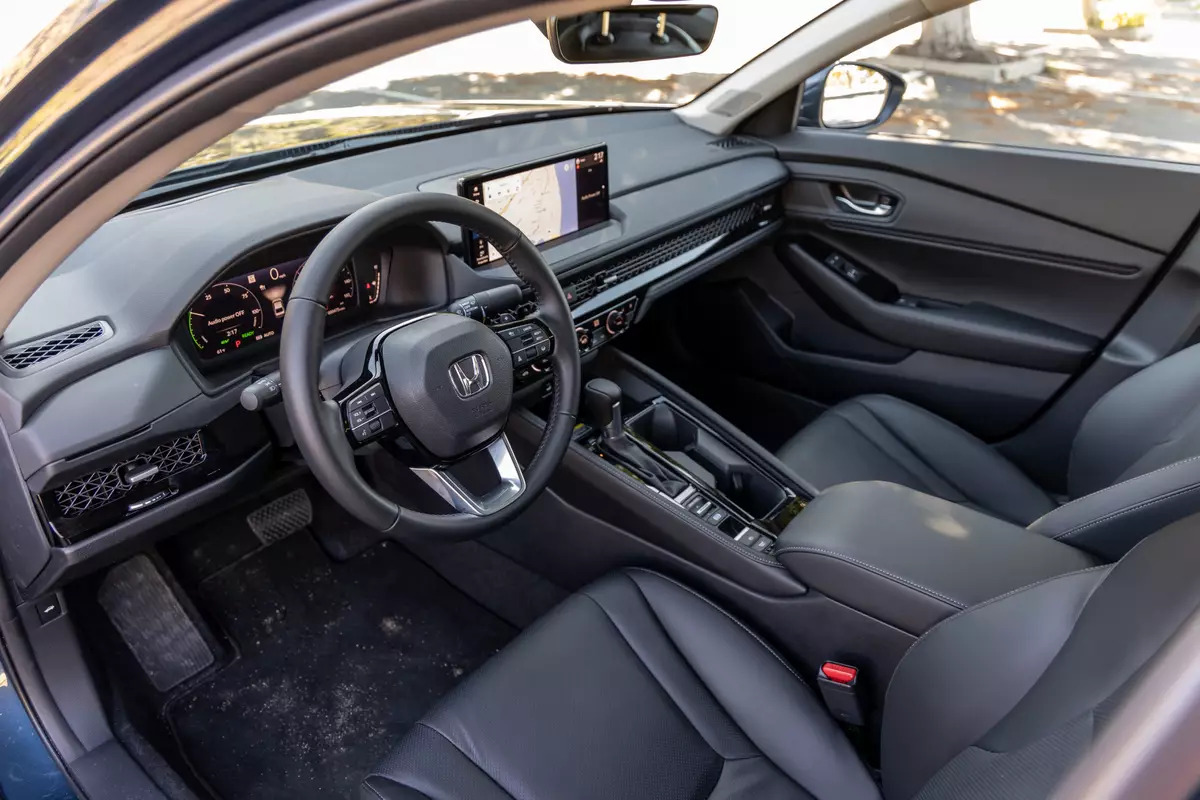
Better Interior, But Be Wary of Technology Creep
Grabbing headlines is the Accord’s newly available 12.3-inch touchscreen display and the inclusion of Google Built-In technology for the Touring. Excluding Google Built-In, the new system performs well with quick responses and crisp, clear graphics. Wireless Apple CarPlay and Android Auto are included with this display, and my use of wireless CarPlay worked flawlessly once connected. A bunch of automotive journalists using Bluetooth to connect to one of a line of cars can be a nightmare, it turns out, but connectivity worked fine apart from this rare scenario. Strangely, despite multiple trims having wireless Apple CarPlay and Android Auto, only the range-topping Touring comes with wireless device charging. It’s a confusing choice.
A more understandable decision — though also more frustrating — is the inclusion of Google Built-In for the Touring’s touchscreen. Many of the functions require a data connection to properly operate, meaning you may be out of luck if you’re somewhere without reliable cellular service. We’ve also had frequent issues getting the Google system to perform simple tasks, though I didn’t encounter them during this testing. Using voice commands for basic tasks like adjusting the in-car temperature worked fine, but in the time it took to say “Hey Google, change the temperature to 69 degrees,” have the command acknowledged and then executed, I could’ve easily done it myself; it feels like a solution for a problem that doesn’t really exist. With my phone connected to CarPlay, voice commands to place calls via Google Assistant were denied because of the CarPlay connection; I had the choice of disconnecting the phone from CarPlay or using Siri to place a call via voice command.
There’s a physical volume knob in front of the dashboard touchscreen, but unlike other, older Honda touchscreens, track and tuning adjustments are touchscreen-exclusive; older systems at least have buttons for those functions. Climate controls are, blessedly, physical buttons and knobs, and they feel high-quality to the touch. One more welcome physical control is the traditional gear selector lever instead of the push-button gear selector in prior models; the latter was fairly intuitive but also annoying, and it occupied roughly the same amount of space on the center console.
All 2023 Accords have a standard 10.2-inch digital instrument panel, which I’ve experienced and enjoyed in the 2023 Pilot SUV. My personal favorite feature is that the digital representation of the Accord in the center of the display shows when the taillights and turn signals are activated — helpful if you’re worried about the regenerative brakes illuminating the brakelights.
LX and EX trims get a 7-inch touchscreen along with volume and tuning knobs, but its small size relative to the larger screen left me a bit disappointed. Apple CarPlay and Android Auto are standard with this display, too, but require a wired connection. Those wired connections — at every trim level — are exclusively USB-C ports, with one for data connections and one for charging. (Higher trims add two more USB-C charging ports for rear passengers.) The Accord EX’s interior is also lacking in terms of materials quality when compared with higher trims, but it still felt well built.
As with other newer Hondas, the Accord’s forward visibility is improved because its front roof pillars have been moved rearward as part of its exterior update. Front-seat comfort is acceptable and improved, but I found my right knee bumping into the center console often, which wore on me during a day of driving. The taller dashboard, however, gave me more vertical knee room than the previous model.
Honda says the new Accord has gained less than a half inch of rear legroom. I’ve never found the backseat in previous Accords lacking in that respect, but more is welcome. My biggest issue is that the sloping roof of the fastback-adjacent styling cuts into rear headroom. I’m 6-foot-1, and while I can sit upright in the backseat, my head will touch the ceiling. Trunk space appears adequate, but there aren’t any useful tricks beyond the common 60/40-split, folding backseat; underfloor storage is taken up by tools and the tire repair kit.
Safety
The 2023 Accord comes standard with the Honda Sensing suite of active-safety features. As of this writing, the car had not yet been tested by either the Insurance Institute for Highway Safety or the National Highway Traffic Safety Administration. New for 2023 is Traffic Jam Assist, which can operate at speeds up to 45 mph and keep the Accord centered in its lane at a prescribed following distance from a preceding vehicle.
Should You Buy an Accord?
Selfishly, my answer is yes, if only to ensure that larger sedans remain on sale for years. Forgetting my nefarious goals, if you’re in the market for a mid-size sedan there are few better choices than the Accord. It’s very businesslike and no-nonsense in its approach, and hybrid versions are impressively efficient. For a more aggressive (and possibly more fun-to-drive) sedan in this class, you might want to consider a Toyota Camry instead. While the Accord isn’t necessarily the cheapest of the bunch, it’s very well rounded and felt worth its sticker price — whether it was the just-over-$30,000 EX, the almost-$34,000 Sport or the almost-$39,000 Touring. The sedan isn’t dead just yet, and the Accord is a solid choice in a dwindling field.
A year of upheaval for Alfa Romeo
The brand strongly supported last year's results of the Stellantis group, confirming a successful turnaround, with improved operating results as a highly profitable brand. Tonale achieved success with tight quality control, which has been significantly improved. The year was full of exciting challenges, but above all excellent commercial results, showing clear growth in Europe with registrations up 22%, which led to a significant increase in market share, in relation to and in contrast to the results of the region, where it was recorded down 11% compared to 2021. In terms of registrations, many markets recorded strong results compared to 2021: France +101%, Italy +22%, Germany +22%, Spain +28%, Netherlands + 84%, Austria +85%, Greece +163%, Portugal +174%.
Globally, the results describe a stable situation in terms of business results, similar to the consolidated results of 2021, and the significant results in Turkey stand out within the global results as the fastest growing market, with four times the volumes compared to 2021. In Asia, the Stelvio recorded the most significant increase of +25%.
The year 2022 was marked by the Tonale, the first electrified C-Class SUV, which marked the beginning of the brand's metamorphosis and is a milestone in the "zero to zero" process, which will enable the Alfa Romeo brand to become the fastest brand in the world to transition from zero electric vehicles (starting in 2022) to a completely zero-emissions range in 2027. Giulia and Stelvio, the main stars of the Alfa Romeo range and pillars of the brand's future production, have been renewed in terms of design and technology and are ready to position themselves as reference points in their segments, as which they have been since their premiere.
As repeatedly emphasized by brand representatives, Alfa Romeo brand strategies are driven by the slogan "quality without compromise". Indeed, the highest global goals have been achieved. One of them is the result published by the JD Power company in the USA, which is the Customer Satisfaction Index, in which Alfa Romeo ranks first in the world of cars.
2022 is a year to remember, and the pleasure and rewards don't end there. The result achieved by the Alfa Romeo team in the Formula 1 World Championship saw them jump to a high 6th place in the constructors' standings: the team's best result in a decade.
2022, which rewarded the efforts and dedication of a cohesive and determined brand, which aims to further progress in 2023. A year that promises to be full of challenges that Alfa Romeo will face with its usual bold attitude that the brand is known for, a symbol of noble Italian sporting spirit since 1910.
It's official: Bentley is discontinuing the W12
Bentley has announced that it will end production of its famous W12 engine next year, after producing the most powerful version ever for the ultra-limited edition Bentley Batur.
Production of the twin-turbo unit will stop in April 2024, as the British firm wants to speed up the step towards its Beyond100 strategy, according to which every Bentley model will be electrified by 2030, writes Autoblog.
Bentley will now focus efforts on its V8 and V6 hybrid lineup and will turn its W12 production line into an "extended area" for these powertrains.
When production ends next year, around 105,000 examples of the W12 engine will have been built since it was introduced in 2003.
The last 6.0 liter W12 will power 18 Batur Coupes, and with 739 hp it will be the most powerful SUS engine ever installed in a production Bentley.
Batur is already sold out, but Speed variants of the Continental GT Mulliner and Flying Spur Mulliner can still be ordered with the W12 engine.
Bentley expects orders for the W12 variants of the Continental and Flying Spur to close in December this year amid strong demand, but has not revealed how many units are left.
New Lexus RX 450h+ 2023 review
Lexus's large SUV offers plenty of luxury and tech, but it's not as family-friendly as its size would suggest
Verdict
The new Lexus RX 450h+ delivers on plenty of traditional Lexus attributes. There’s an impressive array of technology on board, the ride is tuned for comfort above all else and the build quality is exemplary. It’s a big SUV so fairly average practicality might be its undoing for some families and keen drivers will be better served elsewhere.
The Lexus RX was one of the first to secure a slice of the burgeoning luxury SUV sector when it launched in the late 1990s and the model line has gone on to reach 3.5million sales globally, helped by its pioneering hybrid technology.

Within the Lexus stable, the RX has been arguably the most successful car at taking on the established players from Germany. The incorporation of a self-charging hybrid powertrain in 2005 was a defining moment for the RX, but since then it’s taken evolutionary steps with a clear focus maintained on comfort and build quality. With this fifth-generation RX, however, Lexus claims it has made “a complete reinvention of the large luxury SUV” and produced a large premium SUV that is more competitive than ever.
The new RX has arrived just at the right time. 2023 has seen both the Mercedes GLE and BMW X5 receive mid-life updates, with hybridisation being added across the range for both models. As an early adopter of hybrid power, it’s no surprise every Lexus RX is electrified.
The entry-level 350h comes with a 247bhp 2.5-litre four-cylinder petrol with self-charging hybrid technology and there’s also a 500h “performance hybrid” with 366bhp from its turbocharged 2.4-litre and plug-in hybrid system - the first time Lexus has mated turbocharging with hybrid power.
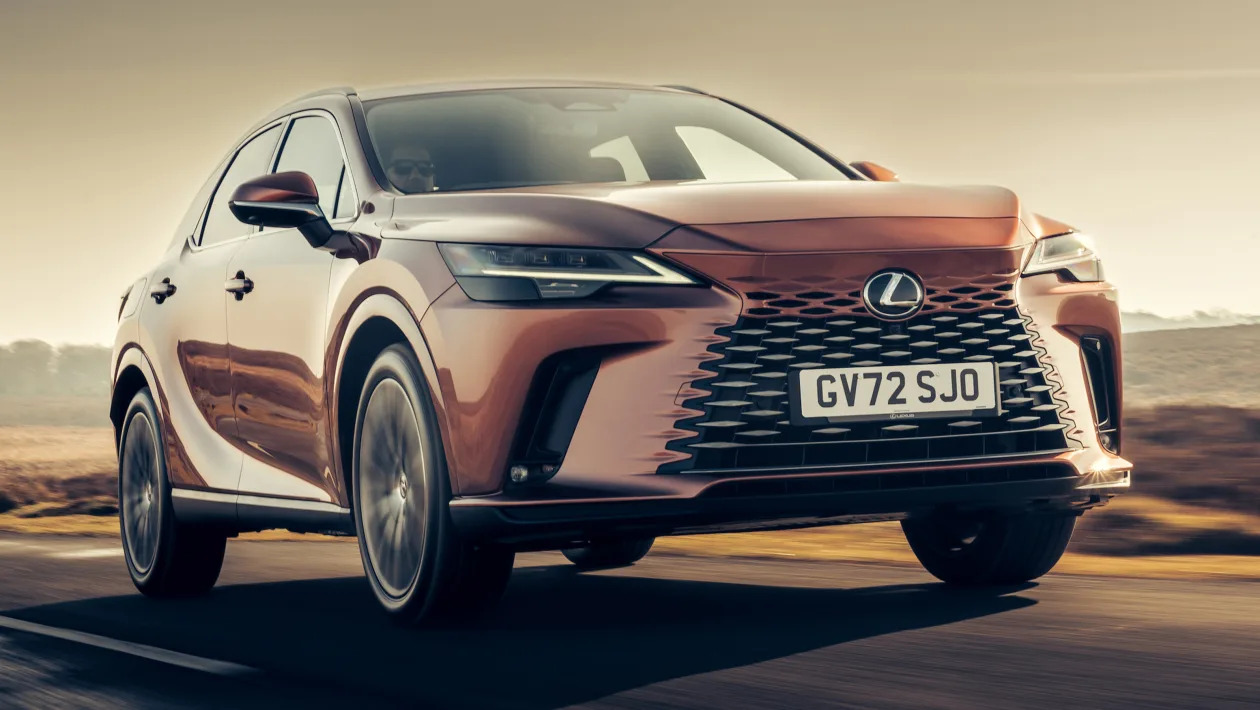
In the middle of the pack sits the 450h+, which borrows its 2.5-litre four-cylinder petrol engine and plug-in hybrid system from the new NX - the first Lexus to offer PHEV capability. The new all-electric RZ (Lexus’s first bespoke full-EV) might look similar to the RX, but that car will use the e-TNGA platform found under the Toyota bZ4X and Subaru Solterra. The RX actually sits on the same GA-K platform as the smaller NX.
Our first taste of the new RX comes in 450h+ form - which Lexus says will account for 55 per cent of sales for its large SUV. The petrol engine combines with a 18.1kWh battery and an electric motor to drive the front wheels but there’s a second electric motor on the rear axle delivering electric four-wheel drive in certain circumstances. On paper the 450h+ sounds potent enough with 304bhp allowing for a 6.5-second 0-62mph time.
It takes a little time to adapt to this powertrain and ensure you’re playing to its strengths. It uses an e-CVT gearbox so if you’re mashing the throttle for an overtake, the petrol engine’s revs will rise to a rather unrefined drone. Hard acceleration overall feels a little underwhelming in the 450h+ although the system is perfectly smooth in its power delivery. Strangely, there are gearshift paddles behind the wheel which display the CVT’s ‘gears’. Given that there’s only one variable gear available in a CVT, moving up and down the simulated steps yourself doesn’t really have much of an effect on the driving experience. You just alter the level of engine braking slightly by raising or lowering the revs, we expect 99 per cent of RX owners won’t ever use the paddles.
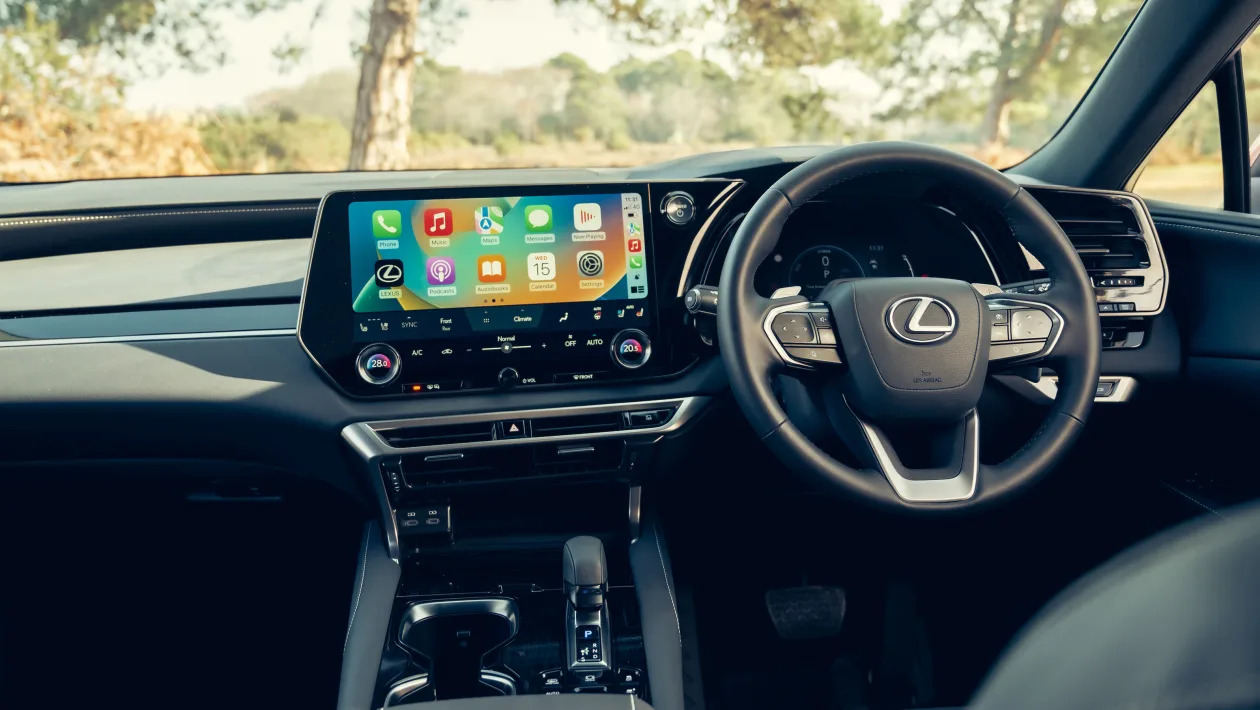
Provided you have enough energy in the battery, you can, of course, switch to electric only mode. The instantaneous torque gives the RX some extra pep around town and silent EV running certainly suits the RX’s calm persona. Lexus claims around 40 miles of electric-only running is possible - most people should get near to this figure with careful driving.
Once that 18.1kWh battery has been emptied (the 6.6kW on-board charger means a full charge takes around two hours and 45 minutes), there’s a second battery that allows the 450h+ to run as a self-charging hybrid. This essentially means you’re always utilising the efficiency benefits of hybrid running. It’s the first time we’ve come across this technology and for PHEV users that might forget to charge or find it impractical to do so regularly, it’s a nice safety net to have. Even with this innovation, the claimed 256.8mpg WLTP fuel economy figure will probably be out of reach for normal driving.
The powertrain rewards relaxed driving and this statement applies to the suspension too. Our car was fitted with adaptive damping, which doesn’t vary too much depending on your chosen setting. Even with 21-inch alloy wheels, it's plainly obvious the RX has been engineered to float over bumps and dips, rather than communicate the road surface to the driver.
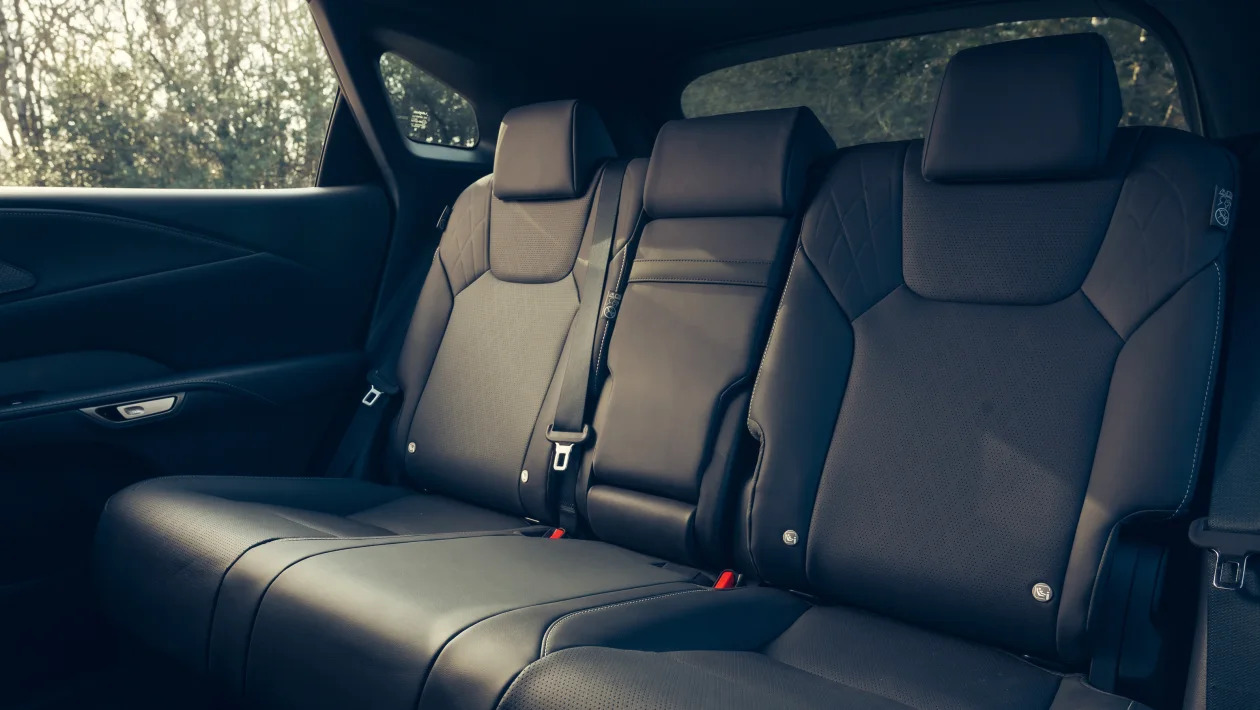
We’re keen to try out the ‘Direct4’ four-wheel drive system exclusively offered on the RX 500h, which apparently keeps pitching under acceleration and braking at bay - that rocking motion was especially prevalent on this 450h+.
Arrive at a series of bends and despite the focus on comfort, the RX can get into a rhythm. The steering wheel has a reassuring weight to it and the handling is tightened by the availability of six degrees of rear-axle steering. You’re always aware of the 2,240kg kerb weight but you can still flow the RX into corners nicely. Get a little too abrupt with steering inputs and you’ll a tendency towards safe, nose-heavy understeer.
Lexus says it has worked hard on improving the RX’s refinement, although the previous model was one of the best in its class in this respect. The powertrain certainly helps, but thicker glass and more sound proofing means this model is supremely quiet even at motorway speeds.
The interior compliments the sedate nature of the RX very well. We tested the top-spec Takumi trim level, which has a huge electric panoramic roof, heated seats front and rear, three-zone climate control and an uprated sound system.
The 14-inch central screen is the main focal point up front and the infotainment system responds immediately to inputs, either from the touchscreen itself or from the steering wheel buttons. It marks a huge step forward from the old track pad setup from the previous Lexus RX and Apple CarPlay or Android Auto can be wirelessly connected as well.
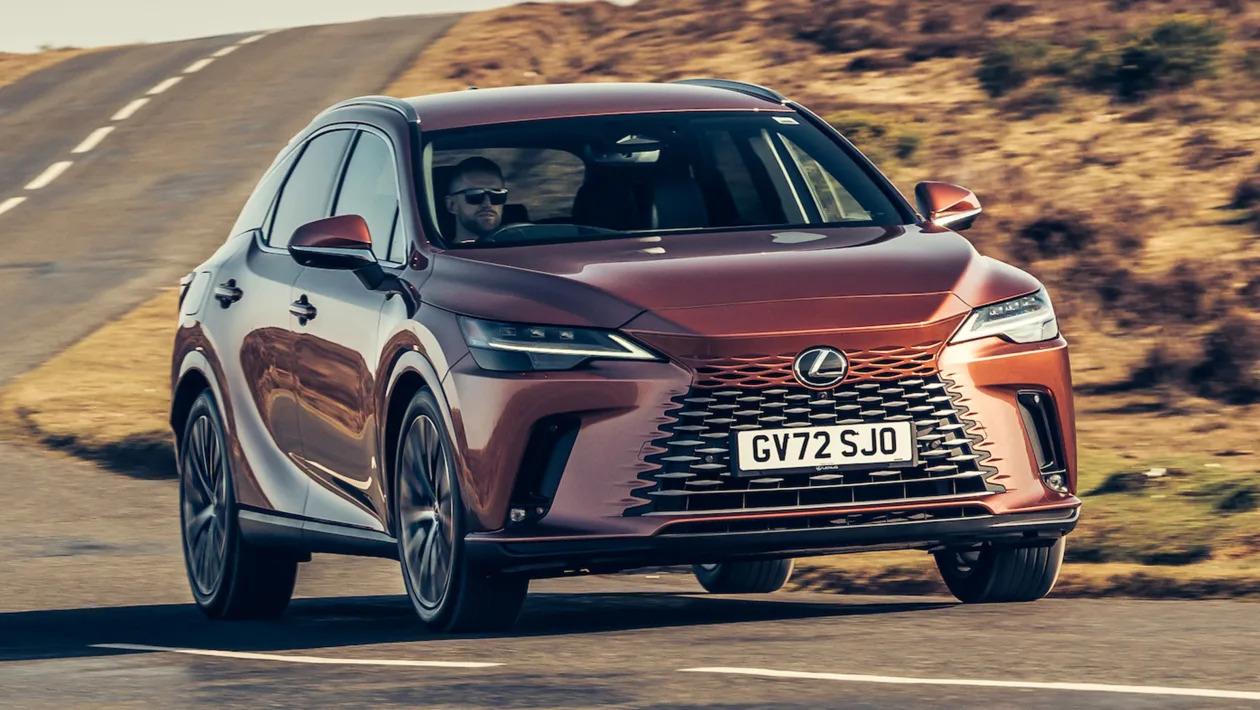
A Mercedes GLE might have the RX beaten in terms of interior wow factor, but the Lexus is up there with the very best for build quality. All the main touchpoints feel solid and things like the door handles and centre console openings are superbly damped. The rear seats can be folded up and down with the touch of a button - parents might prefer the quicker manual lever on lower-spec models.
There are lots of little cubby holes dotted around the cabin and the rear seats will accommodate three adults with no problem, but the lack of a seven-seat model is a bit of a shame. The 461-litre boot is also a little disappointing compared to the competition.
A mid-range ‘Premium Plus Pack’ still offers the panoramic roof as well as a head-up display and wireless charger. It also has the adjustable digital rear view mirror/monitor, which is an impressive bit of kit but slightly superfluous considering rear visibility is perfectly acceptable.
The RX with this 450h+ powertrain kicks off at £64,950 in Premium Plus guise - rising to £79,450 for this Takumi model. Given the new 2023 X5 starts from £66,230 with a mild-hybrid engine and you can’t get a Mercedes GLE for under £77,890, the RX 450h+ appears to be keenly priced.
2023 Ford Bronco Sport Heritage Editions Play the Retro Card
With or without its wayback garb, this baby Bronco remains impressively capable.
Ford continues to channel the rich history of its iconic Bronco 4x4 with the introduction of two new retro-inspired special editions of its compact Bronco Sport SUV.
The 2023 Bronco Sport Heritage Edition and Bronco Sport Heritage Limited Edition celebrate the birth of the Bronco brand with a classic-themed appearance package that takes styling cues from the original 1966 truck. Both variants feature a white roof, white rear badging, white 17-inch aluminum wheels, and a white grille with red BRONCO lettering.
The Bronco Sport Heritage Edition, built on the Big Bend trim level, utilizes Ford's 181-hp turbocharged 1.5-liter inline-three, which is paired with an eight-speed automatic transmission and all-wheel drive. Suspension features include hydraulic front bump stops and specially tuned springs included in Ford’s High-Performance Off-Road Stability Suspension (HOSS) system package, plus five user-selectable "G.O.A.T." terrain modes for off-road driving.
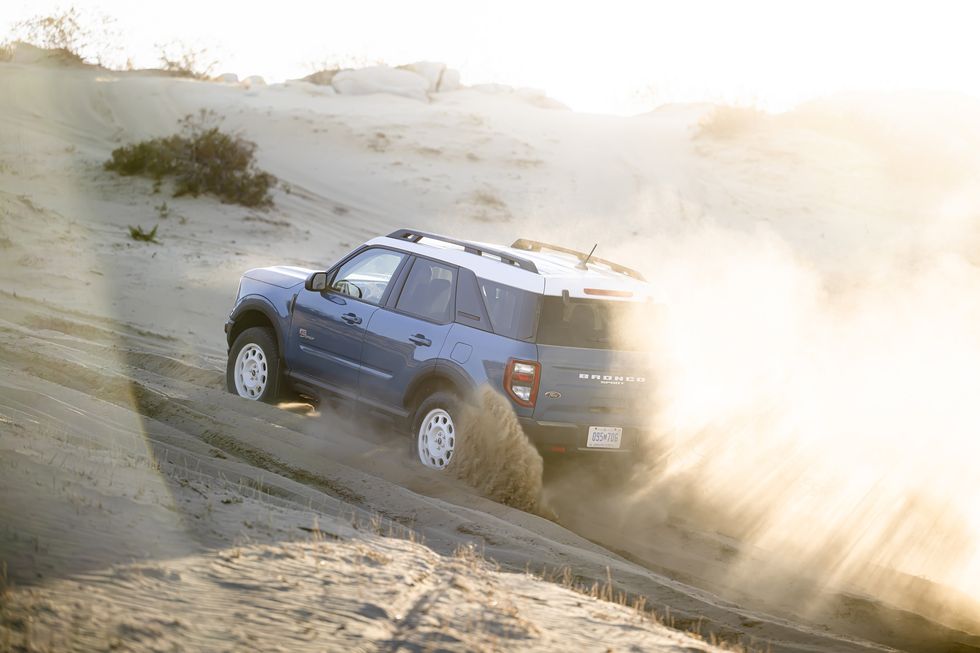
The Heritage Edition's interior styling includes white trim accents, plaid cloth seats, blue-and-red accent stitching, a microsuede center console armrest, and Navy Pier Blue accents on the door panels and dash. Buyers have a choice of seven paint options, including Robin's Egg Blue, a throwback color based on one that was available on the original Bronco.
The pricier Heritage Limited Edition is derived from the Bronco Sport lineup's more off-road-focused Badlands package, which features the larger turbocharged 2.0-liter inline-four, two additional G.O.A.T. modes, a torque-vectoring rear differential, and a lockable center clutch pack for the all-wheel-drive system. Our Peak Blue sample is one of three paint shades available, the others being the lighter Robin's Egg Blue and the intense Yellowstone Metallic.
Heritage Limited Edition–specific features include larger 29-inch all-terrain tires, leather-trimmed seats, and white door inserts. A retro-style plaque adorns the center console, while metal Bronco door badging in the classic '60s script is satisfyingly eye-catching.
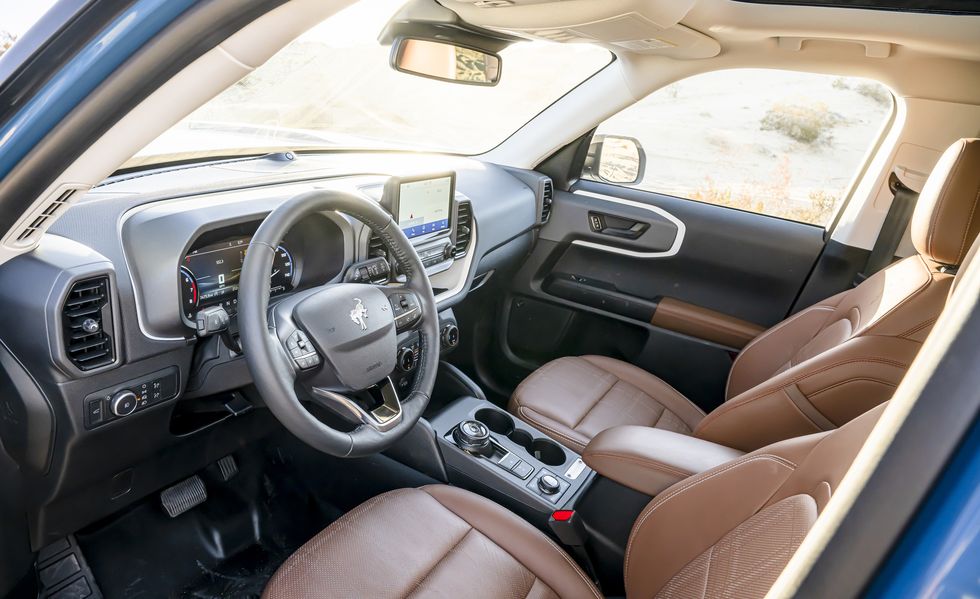
Despite its basis in the humble C2 unibody platform as used in the Escape SUV and Maverick pickup, the Bronco Sport proves to be unexpectedly capable off-road, with the 2.0-liter's 250 horsepower and 277 pound-feet of torque making light work of the steep gullies, embedded boulders, and deep sand that constitute the Johnson Valley area of the Mojave Desert. (So much of the model's off-road development was conducted here that Ford chose to include a geographic coordinate from the area as an Easter egg hidden in the molding of the rear hatch trim.)
An aluminum skid plate, part of the standard Badlands equipment package, eases concerns of stabbing the Bronco Sport's underbody with spiky terrain elements. Despite the Sport's modest ride height, its 8.8-inch ground clearance (on 235/65R-17 tires, the model's largest available) proves to be perfectly adequate for comfortably brisk-paced desert driving as we follow the dusty wake of our guide, Melissa. She is well-versed in the Bronco Sport's abilities, having taken a stock Bronco Sport Badlands to first place in the 1500-mile, off-road Rebelle Rally in both 2021 and 2022.
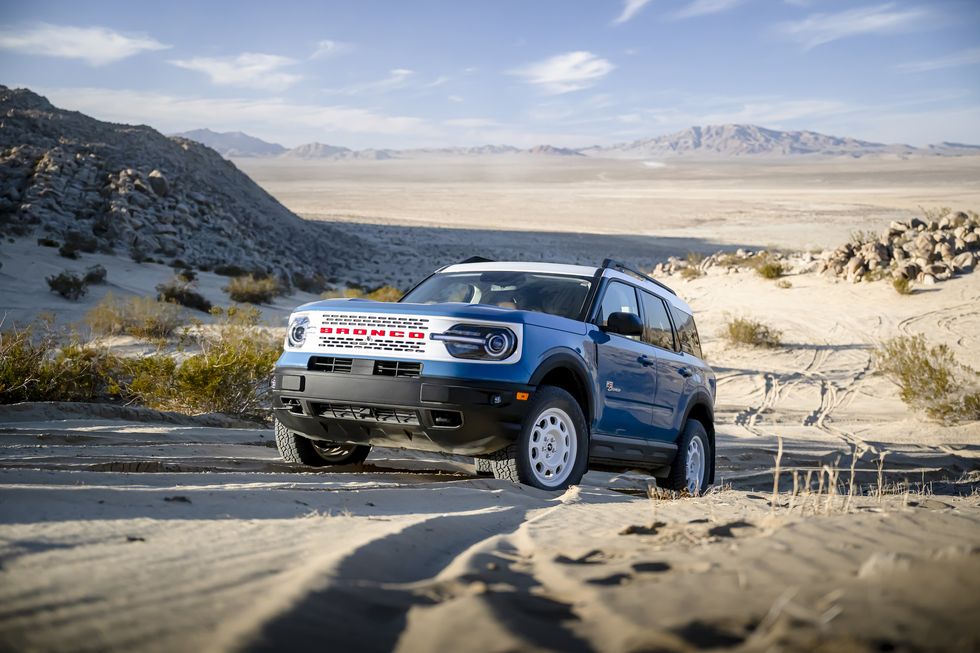
It is the suspension that makes the Bronco Sport, and despite the plethora of off-road driving modes available, this SUV handles even soft trail running just fine in its standard drive mode. Locking in the all-wheel-drive system and the rear differential is more than sufficient for confident thrashing in deeper sand.
All of that would be equally true for the less retro-tastic Badlands model, however. At $46,250, the Heritage Limited Edition is fully kitted out, carrying nearly $5000 worth of features that are optional on the Badlands. Screen that out, and you see that the retro look carries a roughly $2000 premium. One rung down, the $34,245 Heritage Edition represents a roughly $1500 upcharge over the equivalent Big Bend model.
Is that worth it? Well, several miles east of where we drove this Bronco Sport, classic Broncos, stock and modified, are swarming the viewing areas of this year’s King of the Hammers desert road-race competition. For off-road enthusiasts, the appeal of those classic Broncos, the reborn Bronco, and this offshoot Bronco Sport is wrapped up in the combination of capability and aesthetics. The Bronco Sport Heritage Editions lean more heavily on the latter, but to no detriment of the former.

